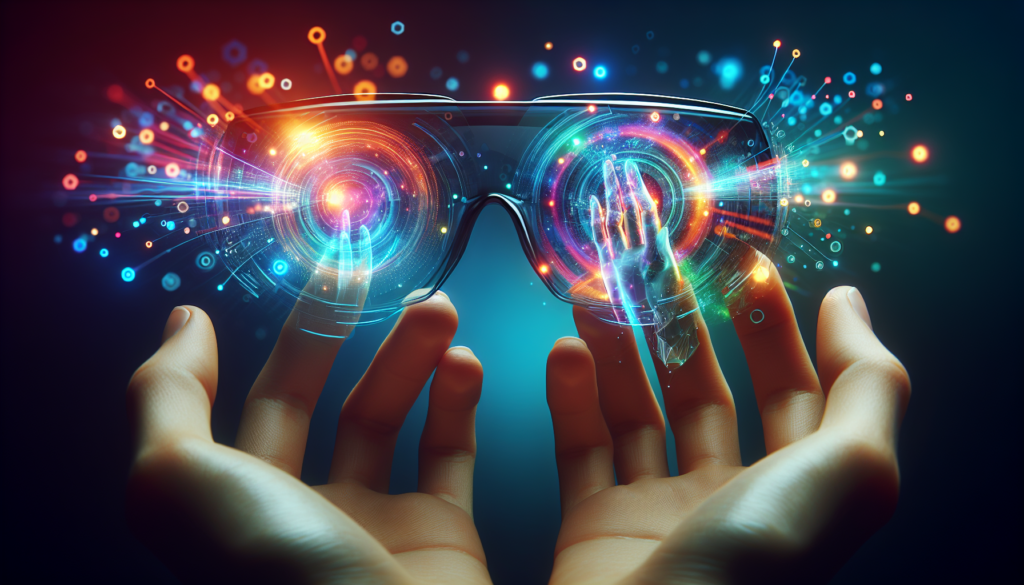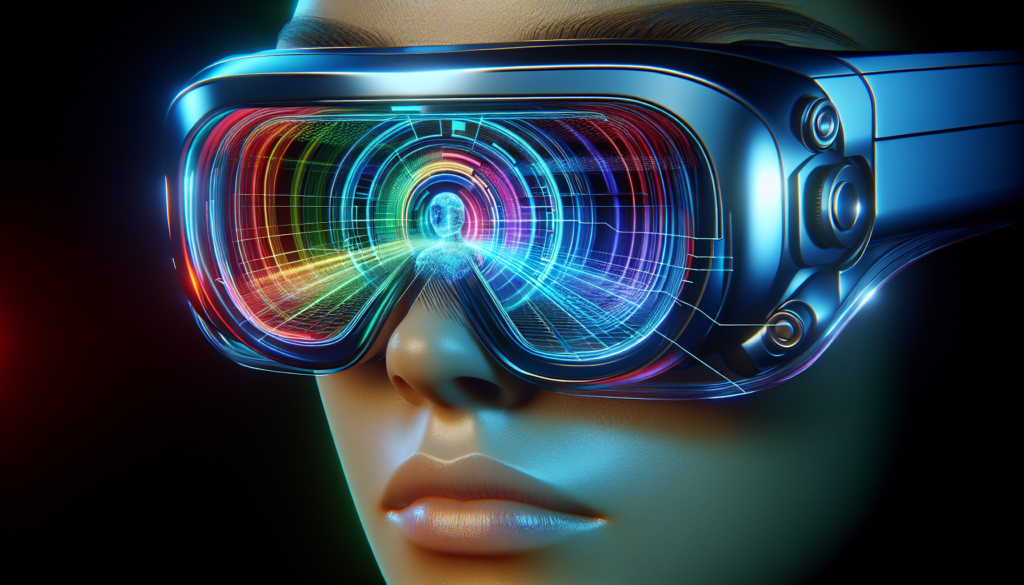Imagine a world where digital information seamlessly blends with the real world, enhancing our everyday experiences. You might have heard the term AR thrown around, but what does AR actually mean in the realm of augmented reality? In this article, we will demystify the acronym and explore the fascinating implications of AR technology. So get ready to embark on a journey where reality is augmented, and the possibilities are limitless!
Definition of AR in Augmented Reality
AR stands for Augmented Reality. It is a technology that combines the real world with virtual elements, enhancing the user’s perception and interaction with their surroundings. Unlike Virtual Reality (VR), which creates a completely immersive digital environment, AR overlays digital information onto the real world, providing users with a blended experience.
History of Augmented Reality
Early Developments
The concept of Augmented Reality dates back to the early 1960s when Ivan Sutherland, a computer scientist, developed the first head-mounted display system known as “The Sword of Damocles.” This early prototype laid the groundwork for future AR advancements, although it was not until the late 20th century that significant progress was made.
Commercial Applications
In the 1990s, AR started gaining more attention in commercial applications. The U.S. Air Force introduced the Heads-Up Display (HUD) system, which displayed essential flight data directly onto a pilot’s visor. This innovation marked a significant milestone in AR development and paved the way for further advancements in industries such as healthcare, education, and entertainment.

How Augmented Reality Works
Sensors and Input Devices
AR relies on various sensors and input devices to gather data about the user’s environment. These sensors can include cameras, GPS, accelerometers, and gyroscopes. By collecting real-time information, AR systems can understand the user’s position, movement, and orientation in relation to their surroundings.
Processing
Once the data from sensors and input devices is collected, it is processed by sophisticated algorithms and software. These algorithms analyze the data and determine how virtual objects should be rendered and displayed within the real world.
Display and Projection
The rendered virtual objects are then displayed to the user through various output devices, such as headsets, smartphones, tablets, or smart glasses. These devices project the digital information onto a transparent screen or overlay it onto the user’s field of view, seamlessly blending the virtual and real worlds.
Tracking
To ensure accurate overlay of virtual objects, AR systems utilize tracking technologies. These technologies track the user’s movement in real-time, enabling the virtual objects to align and interact with the physical environment correctly. Tracking can be achieved through markers, sensors, or computer vision algorithms.
Types of Augmented Reality
Marker-based AR
Marker-based AR, also known as image recognition AR, relies on specific markers or images to trigger the display of virtual content. When the markers are detected by the AR system, it superimposes digital elements onto the markers, providing an interactive augmented experience.
Markerless AR
Markerless AR, also known as location-based AR, does not require markers or images for virtual content placement. Instead, it uses GPS, sensors, and computer vision to determine the user’s location and overlay virtual objects accordingly. Markerless AR is commonly used in navigation apps and location-based games.
Projection-based AR
Projection-based AR uses advanced projection techniques to overlay virtual content onto physical surfaces. It can project digital images, videos, or interactive interfaces onto walls, floors, or objects, creating a dynamic and immersive AR experience.
Superimposition-based AR
In superimposition-based AR, virtual objects are superimposed onto the real world, simulating how they would naturally appear. This type of AR is often used in applications where precise alignment and blending of virtual and real objects are necessary, such as in architectural design or interior decoration.

Implementations of Augmented Reality
Entertainment
Augmented Reality has revolutionized the entertainment industry, enhancing gaming experiences and creating interactive and immersive content. AR games, such as Pokemon Go, have gained significant popularity, blurring the boundaries between the virtual and real worlds.
Education
AR has the potential to transform the way we learn and understand complex subjects. By overlaying interactive visualizations, 3D models, and simulations onto textbooks or classroom environments, AR enables students to engage and comprehend information in a more interactive and memorable way.
Healthcare
In healthcare, AR has proven to be a powerful tool for medical training, surgical navigation, and patient education. Surgeons can use AR to visualize patient-specific data, such as CT scans or MRI images, during surgeries, thereby improving precision and reducing risks.
Architecture and Real Estate
AR has revolutionized the architectural and real estate industries by allowing clients to visualize and interact with virtual models of buildings and spaces before they are constructed. Virtual furniture placement, room customization, and 3D walkthroughs provide a realistic preview of the final design, facilitating decision-making processes.
Manufacturing and Engineering
AR is utilized in manufacturing and engineering to streamline production processes, improve worker productivity, and enhance maintenance and repair procedures. By overlaying digital instructions, 3D models, or real-time data onto physical systems, AR provides workers with valuable guidance and information, minimizing errors and improving efficiency.
Military and Defense
In the military and defense sectors, AR is used for training simulations, battlefield awareness, and enhancing situational understanding. Soldiers equipped with AR-enabled headsets can receive real-time information about their surroundings, including enemy locations, weapon status, and mission objectives, improving their decision-making capabilities.
AR vs. VR
Definition and Characteristics
AR and VR are two distinct technologies with different characteristics and applications. While AR overlays virtual elements onto the real world, VR fully immerses users in a simulated digital environment, blocking out the physical world. AR enhances the real world, whereas VR creates a new reality.
Technologies and Applications
AR and VR utilize different technologies to achieve their respective experiences. AR relies on sensors, cameras, and input devices to sense and interpret the real world, while VR employs headsets or goggles to create an artificial environment. AR is primarily used in industries such as gaming, education, and healthcare, while VR finds applications in gaming, training, and simulations.
Advantages and Limitations
AR offers the advantage of enhancing real-world experiences while providing access to digital information and interactive elements. It allows users to multitask and remain connected to their surroundings. VR, on the other hand, provides complete immersion into a virtual environment, enabling users to explore new worlds and experiences. However, VR can be isolating and may cause motion sickness.
Challenges in Augmented Reality
Hardware Limitations
One of the challenges in AR is the need for advanced hardware to provide seamless and immersive experiences. Current devices often have limitations in terms of processing power, battery life, and display quality. Overcoming these limitations is crucial for AR to reach its full potential.
User Experience
To ensure widespread adoption of AR, creating intuitive and user-friendly experiences is essential. AR applications should be easy to navigate, provide relevant information, and seamlessly integrate into the user’s daily life. Designing interfaces and interactions that are intuitive and comfortable for users is a challenge that developers need to address.
Privacy and Security
As AR becomes more prevalent, concerns about privacy and security arise. AR applications often require access to personal data and real-time location information. Ensuring the protection of this data, as well as preventing unauthorized access or misuse, is a significant challenge for AR developers and policymakers.
Future of Augmented Reality
Advancements in Hardware
The future of AR lies in the development of more advanced hardware. Smaller, more powerful devices with longer battery life and higher-resolution displays will provide users with more immersive and realistic experiences. Advancements in sensors and input devices will also enable more accurate tracking and interaction with the user’s environment.
Integration with Internet of Things (IoT)
AR can greatly benefit from integration with the Internet of Things (IoT). The ability to connect and interact with smart devices, such as home appliances or wearable technology, will open up new possibilities for AR applications. Imagine being able to control and receive information from your smart home through AR glasses or using AR to navigate smart cities.
Enterprise Applications
AR has valuable applications in the enterprise sector. Industries such as manufacturing, logistics, and maintenance can leverage AR to improve efficiency, reduce errors, and enhance worker safety. The future will see increased adoption of AR in these sectors, leading to greater productivity and cost savings.
Mainstream Adoption
As AR technology continues to improve and become more accessible, it is expected to see mainstream adoption in various aspects of daily life. AR-enabled smartphones, smart glasses, and contact lenses may become common tools for communication, navigation, education, and entertainment. The future holds a world where AR seamlessly integrates into our daily routines, enhancing our interactions with the world around us.
Conclusion
Augmented Reality has come a long way since its early developments and has found applications in various industries. With advancements in hardware, integration with IoT, and enterprise adoption, AR is poised for widespread use in the future. While challenges such as hardware limitations, user experience, and privacy concerns need to be addressed, the potential of AR to enhance our lives and transform industries is immense. As technology continues to evolve, the possibilities for AR are boundless, and it remains an exciting field with a promising future ahead.
